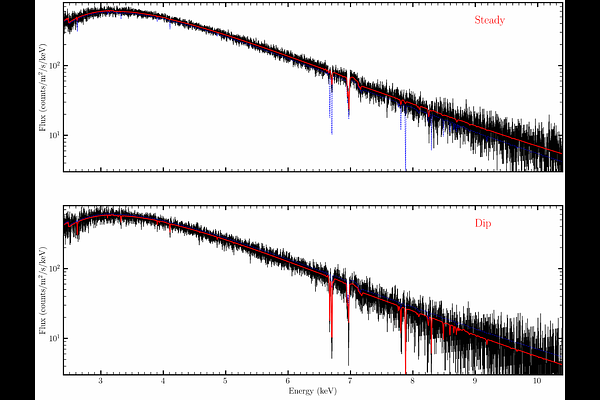XRISM Spectroscopy of the Stellar-Mass Black Hole 4U 1630-472 in Outburst

XRISM Spectroscopy of the Stellar-Mass Black Hole 4U 1630-472 in Outburst
Jon M. Miller Univ. of Michigan, Misaki Mizumoto Univ. of Teacher Education Fukuoka, Megumi Shidatsu Ehime University, Ralf Ballhausen Univ. of Maryland, College Park NASA/GSFC CRESST, Ehud Behar Technion, Maria Diaz Trigo ESO, Chris Done Univ. of Durham, Tadayasu Dotani ISAS, Javier Garcia Caltech, Timothy Kallman NASA/GSFC, Shogo B. Kobayashi Tokyo Univ. of Science, Aya Kubota Shibaura Inst. of Technology, Randall Smith Center for Astrophysics, Harvard-Smithsonian, Hiromitsu Takahashi Hiroshima Univ, Makoto Tashiro ISAS Saitama Univ, Yoshihiro Ueda Kyoto Univ, Jacco Vink University of Amsterdam SRON, Shinya Yamada Rikkyo Univ, Shin Watanabe ISAS, Ryo Iizuka ISAS, Yukikatsu Terada ISAS Saitama Univ, Chris Baluta NASA/GSFC, Yoshiaki Kanemaru ISAS, Shoji Ogawa ISAS, Tessei Yoshida ISAS, Katsuhiro Hayashi ISAS
AbstractWe report on XRISM/Resolve spectroscopy of the recurrent transient and well-known black hole candidate 4U 1630$-$472 during its 2024 outburst. The source was captured at the end of a disk-dominated high/soft state, at an Eddington fraction of $\lambda_\mathrm{Edd} \sim 0.05~(10 M_{\odot}/M_\mathrm{BH})$. A variable absorption spectrum with unprecedented complexity is revealed with the Resolve calorimeter. This marks one of the lowest Eddington fractions at which highly ionized absorption has been detected in an X-ray binary. The strongest lines are fully resolved, with He-like Fe XXV separated into resonance and intercombination components, and H-like Fe XXVI seen as a spin-orbit doublet. The depth of some absorption lines varied by almost an order of magnitude, far more than expected based on a 10% variation in apparent X-ray flux and ionization parameter. The velocity of some absorption components also changed significantly. Jointly modeling two flux segments with a consistent model including four photoionization zones, the spectrum can be described in terms of highly ionized but likely failed winds that sometimes show red-shifts, variable obscuration that may signal asymmetric structures in the middle and outer accretion disk, and a tentative very fast outflow ($v = 0.026-0.033c$). We discuss the impact of these findings on our understanding of accretion and winds in stellar-mass black holes, and potential consequences for future studies.